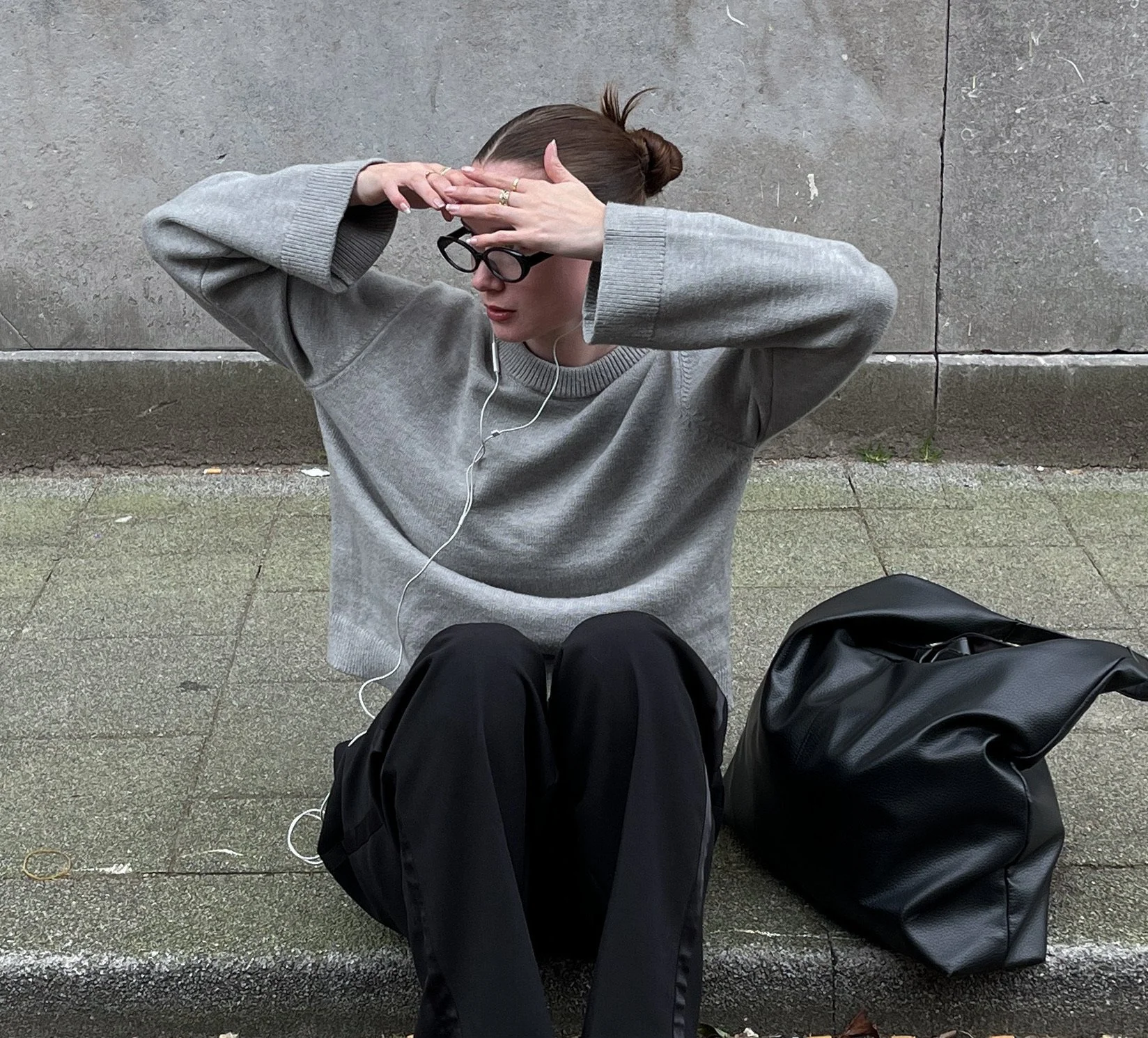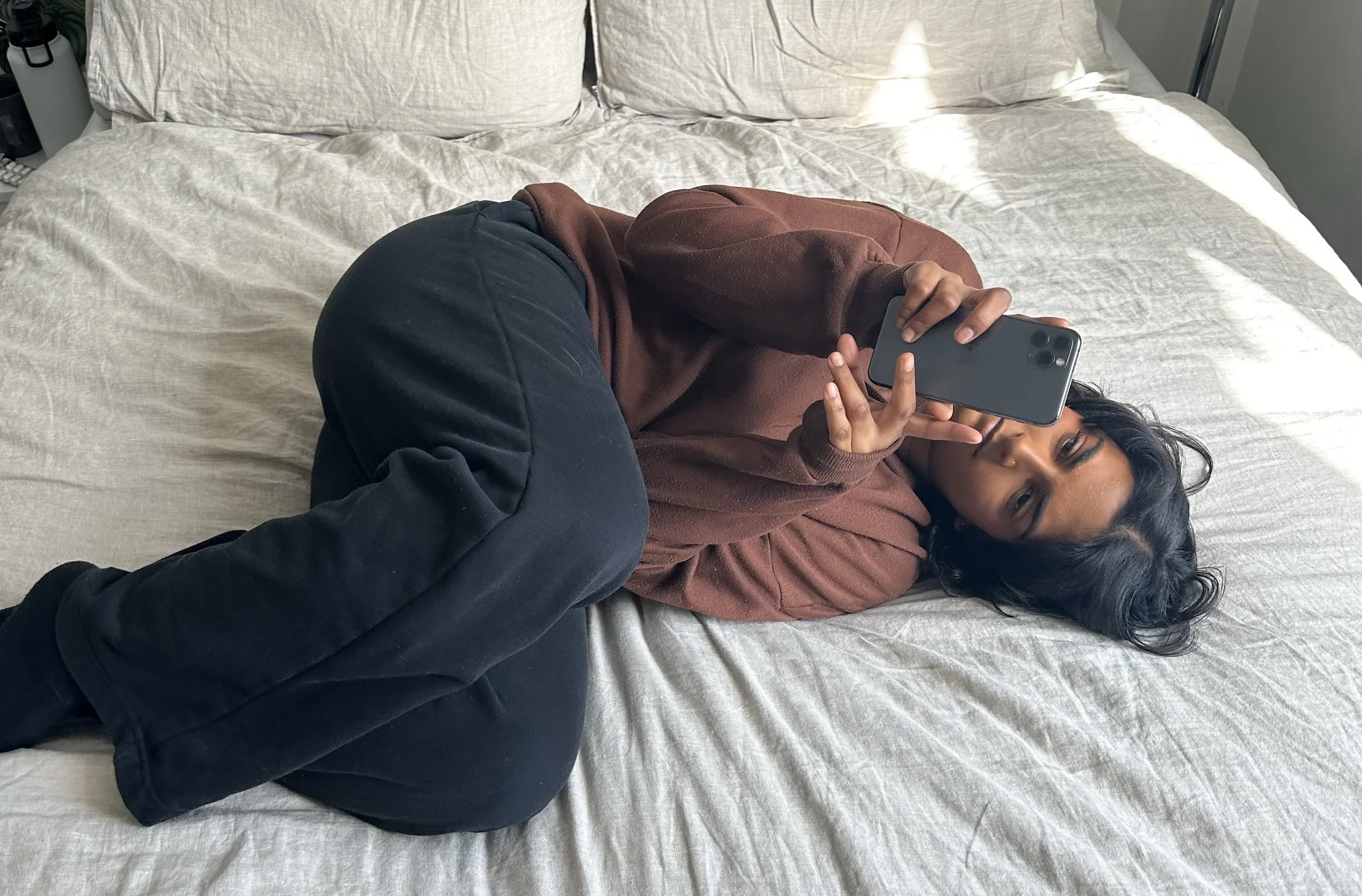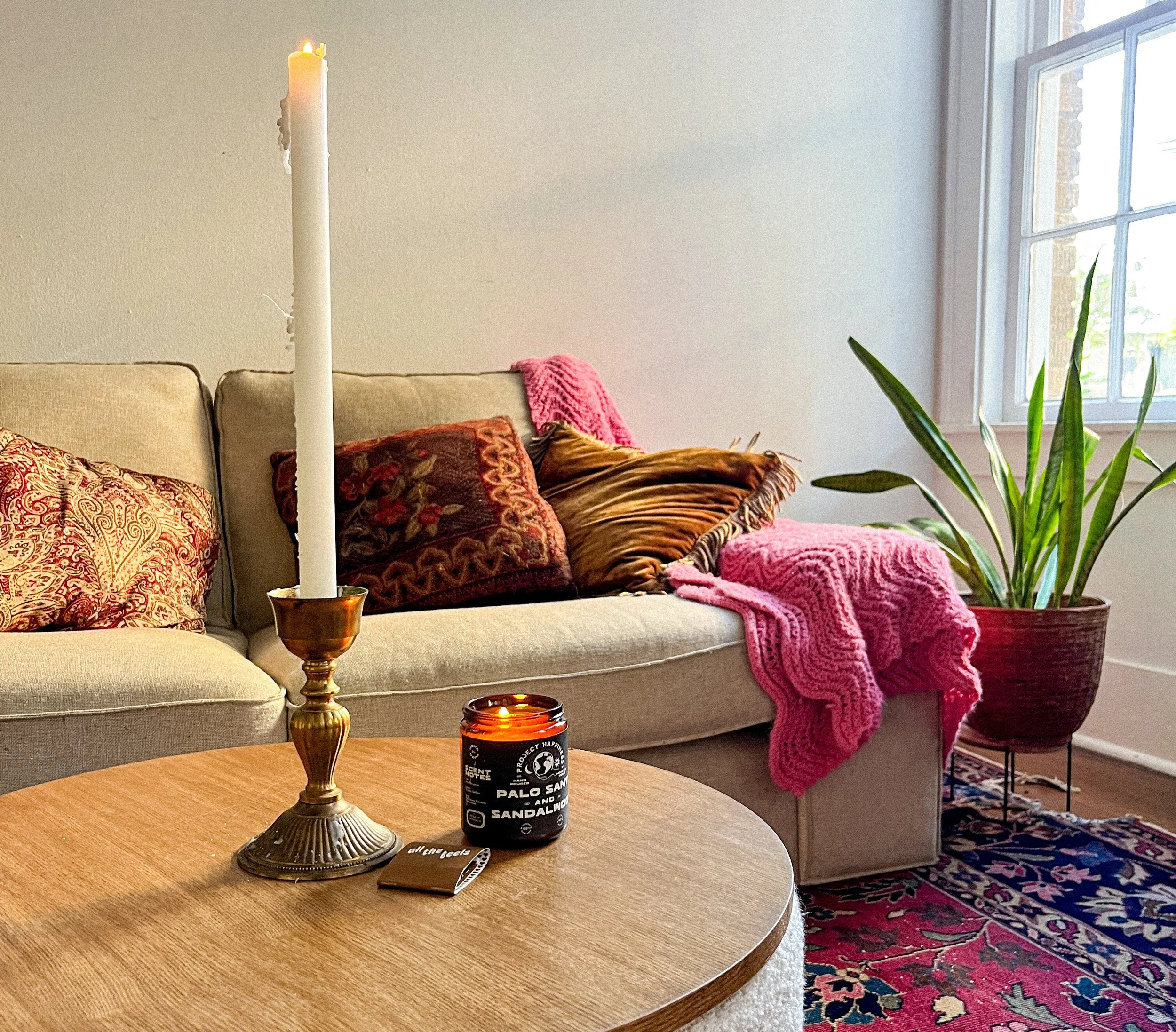The Lost Art of Doing Nothing
You sit on your couch. Just sitting. Within seconds your hand reaches for your phone. You pull it back, try again. The discomfort builds. Why can't you do this?
Doing nothing—sitting without purpose, staring without focus, existing without agenda—is a fundamental human need that predates meditation by millennia. This natural state of unfocused presence activates the brain's default mode network, essential for emotional regulation, memory consolidation, and creative insight. Modern culture has turned this basic human capacity into another task requiring apps, techniques, and measurement.
But your body already knows how to do nothing. You've just been taught to mistrust it.
your hand moves before you realize
You're sitting on your couch. Just sitting.
Within seconds, your hand moves toward your phone. You catch yourself, pull back. Try again to just... be here.
The restlessness builds immediately. Physical. Urgent. The panic rises—something's wrong, you need input, something to break the silence.
Why can't you do this? Everyone says rest is important. You've downloaded the meditation apps. But actually sitting with nothing feels physically wrong. Like holding your breath. Like forgetting something crucial.
You're not failing at rest. Instead, your body is doing exactly what it learned to do: treat stillness as danger.
what the quiet holds
The phone reach isn't really about productivity. And you know that.
Because stillness is where everything you've been outrunning lives. The climate grief you can't afford to feel. The economic dread that sits in your chest. The "what's the point of any of this" that rises when you stop moving.
The intrusive thoughts that arrive the moment you're still: Is this all there is? Everyone else seems fine and I'm falling apart. What if I'm wasting my one life? What happens when I'm 40 if I'm already this tired at 24?
Your nervous system learned that quiet means these things surface. So it keeps you moving. Scrolling. Checking. Filling every pause with input. This stems from a body trying to protect you from feeling everything you haven't had time to process.
The discomfort of doing nothing? Your body remembering that stillness is where the unprocessed everything lives.
all of life is movement
But here's what changes everything: stillness doesn't exist.
All of life is movement. Your pulse beating. Blood rushing. Muscles shifting, catching, holding you upright. Your lungs filling and emptying. Cells being born, living, dividing, dying, and rising again. Thoughts sparking and fading.
Even in what you call stillness, there is constant motion.
To sit "perfectly still" is to move against forces that would pull you elsewhere. Your body makes countless adjustments each minute just to keep you in place. Movement is everywhere, in everything, including in your nothing.
What you call "doing nothing" is actually an intricate dance of biological processes. The discomfort you feel about stillness? It's about something that was never still to begin with.
the original nothing
Your great-grandmother didn't achieve mindfulness. She sat on the porch and existed.
She rocked slightly in her chair—not because she was restless but because bodies in motion stay in motion. She watched birds without counting breaths. She let her mind wander without calling it monkey mind.
No one had convinced her yet that her natural state was wrong. That her unfocused presence needed structure. That her moving stillness needed fixing.
Before meditation became an industry, humans had simpler words. Sitting. Resting. Being.
what your brain actually needs
When you truly do nothing—no technique, no counting, no noticing—your brain switches into default mode network. This network connects distant parts of your brain—the parts that make sense of what happened, that sort through feelings, that help you understand your life.
But here's what matters: it only activates when you're not trying.
The moment you make nothing into something—meditation, mindfulness, practice—you switch back into doing mode. Different system. Different outcome.
Your brain needs purposeless time. Not rest with goals. Not meditation with metrics. Just time without tasks, including the task of being present.
This is where the processing happens. Where your body finally sorts through what you've been too busy surviving to feel.
why nothing feels dangerous now
Every app, every guru, every wellness influencer has turned presence into performance. But that's not why stillness feels wrong in your body.
Stillness feels dangerous because your nervous system learned to stay vigilant. To keep checking. To never fully rest because resting meant missing something—a notification, a crisis, proof that you and the world still exist.
Because your body learned something true: movement keeps you safe. As long as you're doing something, checking something, staying busy—you're not defenseless against everything that could go wrong. The moment you stop, you feel it. The vulnerability. The exposure. Like standing still in the middle of a highway.
Stillness feels like the moment before something breaks. Your body remembers that the last time you really rested, the world fell apart anyway. So it stays ready. Keeps watch. Fills every silence with something, anything, to stay ahead of the next thing that will demand everything from you.
You reach for your phone not from addiction but from genuine need. To confirm you're still here. That everything's still standing. That you haven't missed the next thing demanding your attention or breaking your heart.
This is a body that learned to survive by never stopping. A nervous system trained in perpetual crisis mode, trying its best to keep you functional through everything you've lived through.
permission to move without purpose
The fidgeting, the shifts, the adjustments—this is how life moves through you. Your body making space. Finding balance. Responding to what you can't see but can feel.
Your mind wanders because your brain is doing what it evolved to do—making connections, finding patterns, processing what happened while you were too busy to notice.
And those thoughts that surface in the quiet. The grief, the dread, the "what's the point"—they're what's been waiting. Your body finally trusting you enough to show you what it's been holding.
Tomorrow when you have five minutes, sit somewhere. Don't meditate. Don't practice mindfulness. Don't even try to do nothing well.
Just sit and let your body be a body—breathing, pulsing, making its tiny adjustments. Let the discomfort come if it comes. Let the phone reach happen if it happens. Notice it without shame.
There’s not something broken about you for finding this hard. You're alive in a moment that made stillness feel dangerous. Your body learned to survive by never stopping.
But survival isn't the same as living. And your body is ready to remember the difference—even if it takes time. Even if it's uncomfortable. Even if you have to learn it slowly, five minutes at a time.
Your body knows how to do nothing. It's just been a long time since it felt safe enough to try.
the movement that never stops
Your heart: beating without your permission. Your lungs: breathing without counting. Your cells: being born, dying, born again—right now, while you reach for your phone. Your blood: coursing through everything. Your muscles: constantly adjusting to keep you here.
When you think you're doing nothing, all of this continues. The movement that is life itself.
It just keeps moving.



